Right as the decade began, Marvel Comics’s most ambitious storyline to date (and possibly ever) came to its epic conclusion. The Heroic Age was upon us.
And I truly mean epic in the literary sense. This story has no specific name but I’ll call it the Marvel Dark Age. It spanned six years, with a dozen or more crossover events and hundreds upon hundreds of comics. It took the Avengers from a dying brand, soon to be replaced by the Ultimates, into a modern superhero team.
And just in time, too! Because Disney had literally just purchased Marvel Comics months earlier.
While the eighties and nineties are famous for that gritty, edgy side of comic book superheroes, the 00s are really where Marvel Comics itself went into some really dark territory. (Hence the nickname Marvel Dark Age.)
I’ll keep the Dark Age history abbreviated (read: it’s very long), since it’s mostly 00s history and not 10s history, but I wanted to give some context:
Before the Heroic Age: The Marvel Dark Age
In 2004, Brian Michael Bendis took charge of the Avengers series, and the first thing he did was kill off half the cast and destroy the team. The event Avengers Disassembled is well-known for being pretty dang brutal. The entire team is split apart as many members are killed, including mainstays like Ant-Man (Scott Lang), Hawkeye, Thor, and Vision. Scarlet Witch, behind all the destruction, has gone insane and is essentially a villain from then on.
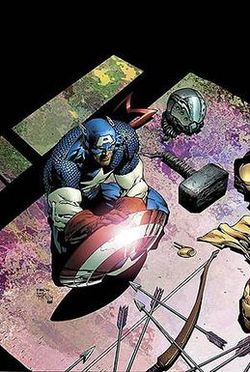
It wasn’t a well-received an event at the time, but it shattered the status quo. And it started a new storyline that would take the next six years to conclude.
After that event, the New Avengers formed with a very, very different lineup. Luke Cage, Spider-Man, Miss Marvel, and Wolverine were the core members of the team, and Iron Man and Captain America were more like the obligatory legacy characters. Most of the traditional Avengers were dead or gone in some way.
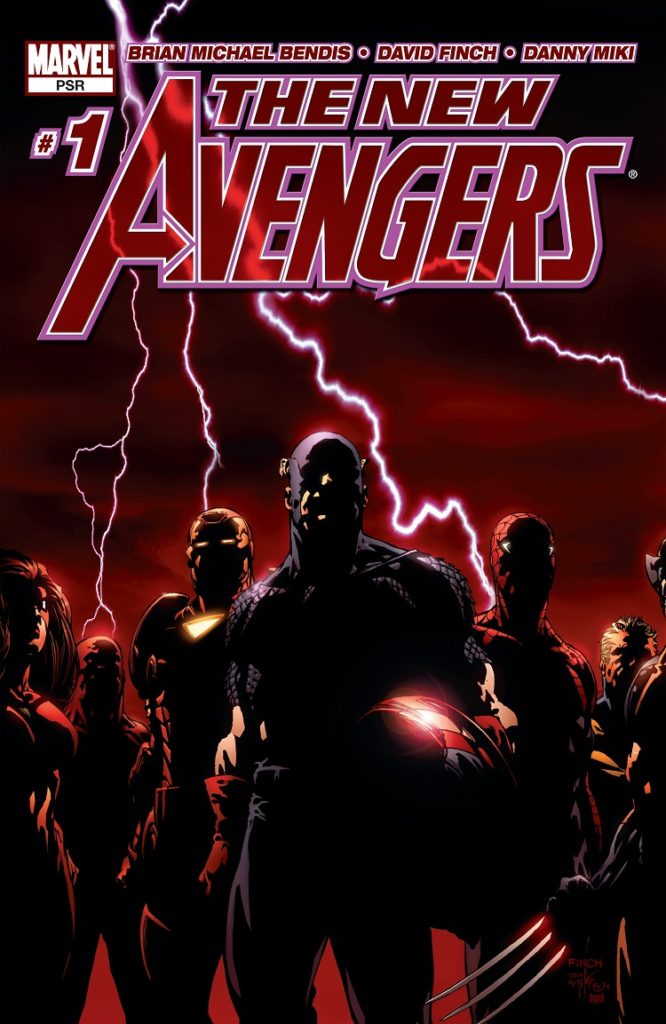
And immediately, this New Avengers team was thrown head-long into a mega-sized storyline hand-crafted by Bendis.
The next event he did? House of M, a fun event where the Earth was replaced by one where the X-Men controlled the planet. But it had a dramatic conclusion—the mentally ill Scarlet Witch uses her vast power to say “No More Mutants.” She erased the powers of all mutants except a select character-shielded few (e.g. Wolverine, Mystique, Storm). Mutantkind was wiped out except for about 200 people, and no new mutants would activate their powers.
Most of the Avengers were gone and most of the mutants were gone. Two events that completely altered the Marvel comics landscape.
Then, the most famous Dark Age event began—Civil War.
Civil War
In 2006, Marvel Comics had a Civil War.
After an entire town is destroyed by crappy superheroes, the government finally passes the Superhero Registration Act, and Iron Man decides to join the government so that heroes aren’t imprisoned or killed by SHIELD and Sentinels and all that. But half the superheroes turn against that, and a gigantic conflict begins.
Bendis himself did not write Civil War, but his fingerprints are all over the main arc. Many significant things happen that would become radical changes over time. Iron Man became, essentially, Marvel’s villain—it was supposed to be an equal bout between him and Captain America, but public opinion was firmly on Steve Rogers’s side. Spider-Man’s Aunt May was killed because he revealed his secret identity. The X-Men found themselves on the run again. Norman Osborn—the Green Goblin—escaped prison and found himself in control of the Thunderbolts, a team of supervillains who sometimes did heroic things.

Then, Civil War ended in exactly the way nobody truly suspected—the government won. Captain America and the anti-registration heroes lost. They either went to prison, accepted registration, or went underground.
Captain America was assassinated shortly afterwards, fully cementing that the old age of Marvel Comics had passed.
It Got Darker
Maybe all of this sounds a little edgy and over-the-top. It kind of is. But, like any good soap opera, it works in-context because it’s all extremely absorbing.
And, of course, things got even worse.

The main superheroes were split into two teams—the New Avengers, who were constantly on the run, and the Mighty Avengers, the government-sponsored group.
Both teams got a comic at the same time, both written by Bendis. They dealt with the same crises and adventures but from different viewpoints, and they often clashed.
There were also plans to create new superhero teams for all 50 states, staffed mostly with C-list heroes and inexperienced teens in a comic called Avengers: The Initiative. Anyone who wasn’t a main Avenger was a part of this series.

Norman Osborn also continued to gain more power. He used the villainous Thunderbolts team not to commit crimes but to work with the government. The Thunderbolts had now become a group that rounded up and imprisoned superpowered people who didn’t comply with the Registration Act. Osborn staffed the team with captured supervillains with implanted chips that would kill anyone who resists. And he got big villains—Venom, Scorpion, Bullseye, and more (this will be important later).
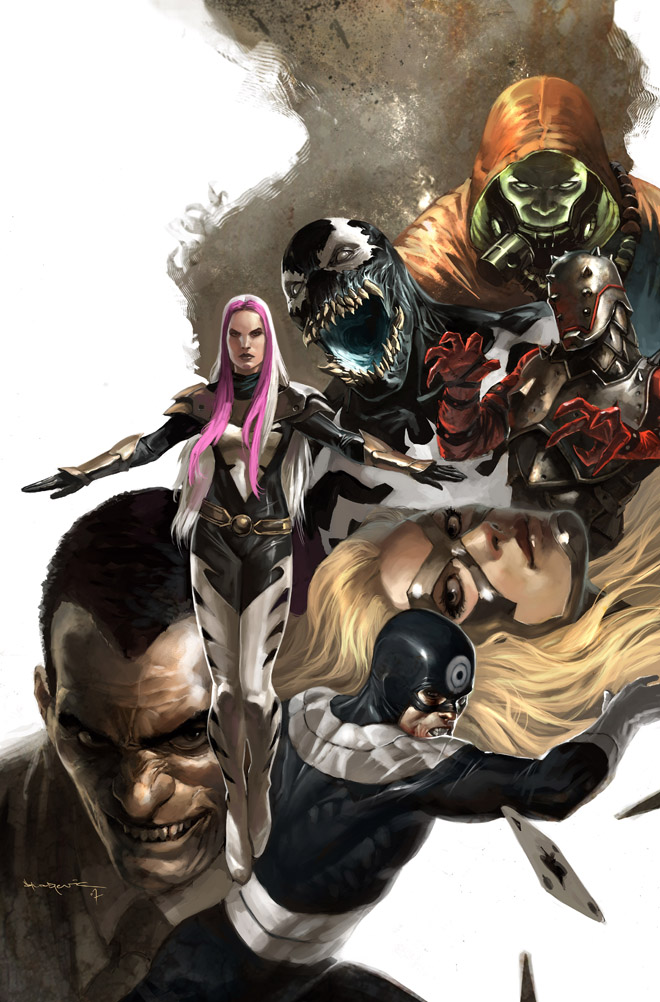
Also, another part of this era was the struggle to figure out just who would take up the mantle to be the next Captain America. There were several contenders, and some of them were less likely than others but it was all in good fun.

At the same time as all this, the X-Men ran into their own big storyline with Messiah Complex. A brand-new mutant baby was born who is incredibly powerful, and all factions on Earth wanted her. The time-traveling mutant Cable got her first and escaped into the future… A future where Hope is responsible for the destruction of most of the planet.
And so that baby, named Hope Summers, would start a trilogy of big X-Men crossover events, separate from the rest of Marvel but still playing a big role.
That part was not yet important to the main Bendis storyline though, because of the big twist…
Secret Invasion
Ever since Avengers Disassembled, Marvel had been building to this event. The shape-shifting Skrull aliens had been infiltrating the planet for years, and had been capturing or killing prominent people. In this event, they finally revealed themselves to the world so they could complete their assault.
Secret Invasion in 2008 was the result of all of that build-up.
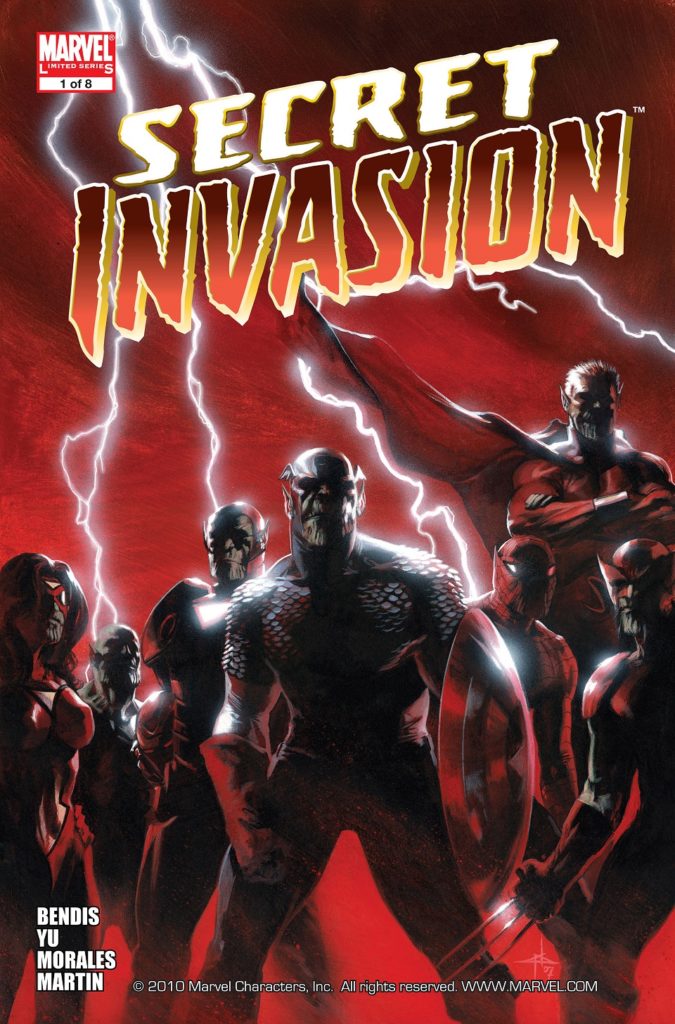
Many of Marvel’s heroes and villains, including Spider-Woman, Ant-Man (Hank Pym), and Elektra, had been Skrulls all along! And while the event itself was kind of stupid, the twists themselves were really fun. The Spider-Woman who had been a part of the New Avengers for years of comics was a villain all along, and Bendis had known the entire time so it actually works in retrospect.
The effects of this event were just as big. SHIELD was basically destroyed. Norman Osborn used the Thunderbolts to kill the Skrull Queen and frame himself as the ultimate hero. And all those 50-state superhero teams? The entire organization had been controlled by Skrulls and almost all of the teams were tainted.
With Osborn a hero, he took control of the U.S. government and established a SHIELD replacement named H.A.M.M.E.R. (sigh, I know). Obviously, since he’s actually a real big villain, this was not good news at all.
And so now ALL Avengers were on the run.
Dark Reign
2009 actually had no big crossover event, unlike most years for Marvel. Instead, the big overarching theme was Dark Reign.
If you like edgy stuff, this is exactly the part of Marvel that you’ve gotta read.

Norman Osborn controlled the U.S. government and invited all his villain buddies—Dr. Doom, Loki, Namor, and more—to help control the world alongside him. In the public, he created the superhero identity Iron Patriot and led a team of fake Avengers with his former Thunderbolts team. That comic is called Dark Avengers, as if you didn’t get the theme yet. The actual Thunderbolts team remained, though, with new members who continued to capture any hero not under Osborn’s control.
For the first time in comics history, the villains really had won, and it stayed that way for a full year.
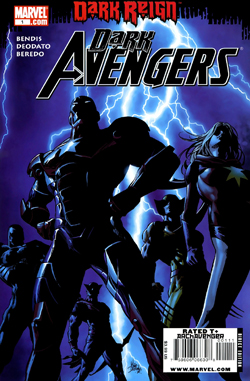
The New Avengers were already underground, but had now become the sole force standing in the way. Honestly, this is kinda… really blunt George W. Bush-era political grandstanding if you think about it, but done in the most 00s way possible.
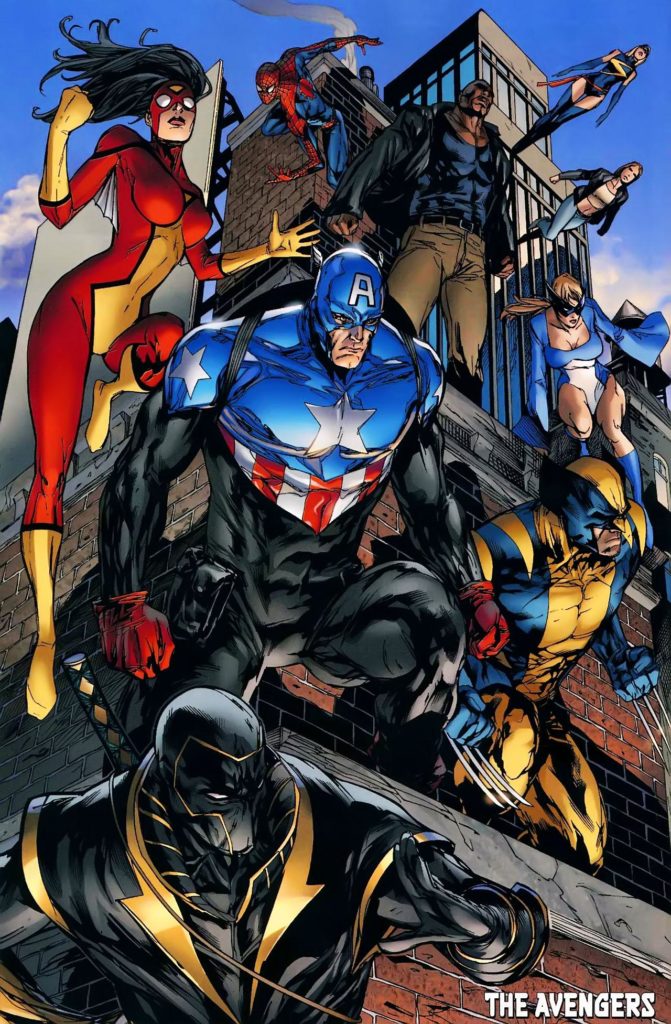
There was still a Mighty Avengers team going around doing hero stuff too, but that one was, uh, weird…
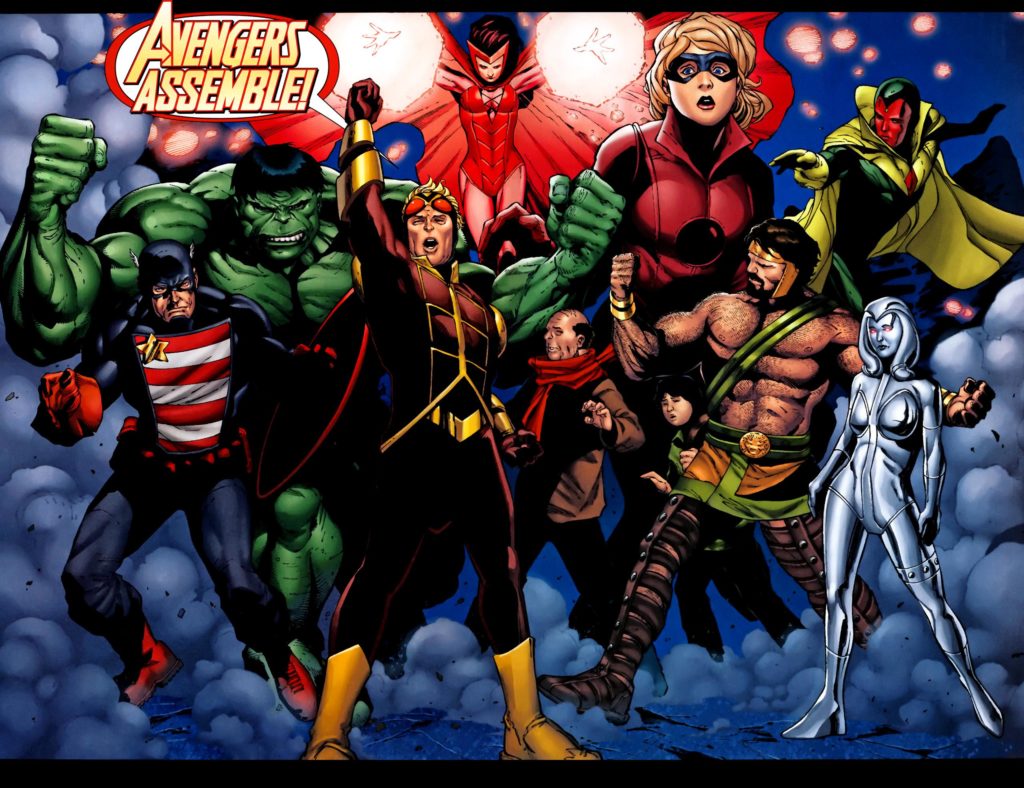
On the X-Men side of things, the remaining 200 or so mutants banded together. They created an artificial island off the coast of San Francisco and called it, uh, Utopia. Yeah.
Sadly for the mutants, this wasn’t too peaceful since Norman Osborn immediately attempted to invade the island. He even created his own fake X-Men group! (That comic was named, of course, Dark X-Men.)

They survived thanks to plot armor, but it certainly was not an easy peace. When the hell was Cable coming back with that stupid ultra powerful messiah figure baby?
Spider-Man had a particularly rough go of it during the Dark Reign era, which kinda makes sense considering who’s in charge here, but Spider-Man’s deal is way too complicated to talk about here.
A Heroic Age Builds
During this time, a couple good things happened in the background.
Thor had come back to life in an extremely good comic by J. Michael Straczynski. Asgardians were being revived, and Asgard itself suddenly appeared, hovering off the ground over a small town in Oklahoma.

And Captain America came back to life! The revival method was extremely idiotic, but it was a sign that big things were coming very quickly.
It wasn’t long before Captain America and Iron Man met again for the first time since Civil War. Obviously there was a little bit of tension there… But, in order to defeat Norman Osborn, they worked together.
What I like about the Dark Reign era is how it feels like it’s all building to a climax. Most comic book periods feel like they are meant to exist in the moment and nothing else. There’s big events where stuff happens is just dealing with the new status quo and biding time until the next event. But with Dark Reign in SUCH a bad place, it was only natural that this was going to be resolved soon, for sure. It also made Avengers Disassembled, House of M, Civil War, and Secret Invasion all truly feel like connected events. It was one big storyline that would finally conclude.
And conclude it did!
Siege
An epic four-month event that concluded six years of Marvel Comics storytelling, spearheaded by Brian Michael Bendis and authored by dozens of different people. This is Siege, Marvel’s big crossover event of 2010.
The story is relatively simple: Norman Osborn was in control of HAMMER, the Thunderbolts, the fake Avengers, and the fake X-Men. And at the height of his power he decided to invade Asgard and claim it as U.S. territory.

The titular siege is a literal invasion of American military forces against the not-yet-restored powers of the Norse Gods. Technically, Asgard WAS on American soil since it floated just above the ground in the middle of Oklahoma… but obviously this invasion was not sanctioned. It was basically Osborn’s last desperate attempt to gain ultimate power.
Every faction in all of the Avengers storylines came together for this big finale. All of Osborn’s forces on one side, and the New Avengers, the Mighty Avengers, the Asgardians, and more on the other side. A real big battle is all I’m going to say.
There’s a lot of other stuff here that I won’t mention because this summary is already way too long. Basically a mentally unstable, extremely powerful hero named Sentry had been manipulated by Osborn for years and finally became consumed by his dark side and laid waste to everything around him in Asgard.
Even though Siege weirdly had lower stakes than Secret Invasion, it felt much, much more important. It was the culmination of hundreds of comic issues and featured dozens of characters. Few characters died, but those who did fall fell in memorable and dramatic ways. As far as I’m aware, anyone who died here has stayed gone ever since.
Of course in the end, the good guys win. And boy, do they win well.
The Heroic Age
The end of Siege is also a farewell to the Dark Age of Marvel. The edgy, politically relevant storyline ended, and a new Heroic Age began. This era is actually titled Heroic Age, so I’m not just nicknaming it.
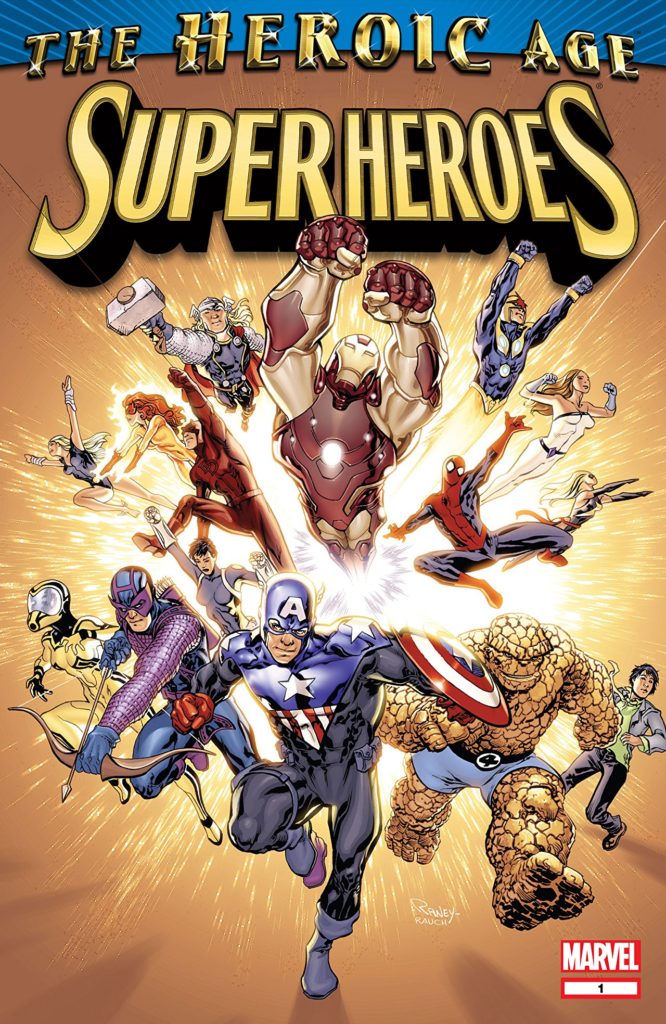
Norman Osborn was captured and arrested. HAMMER was disbanded. The Dark Avengers became criminals again. The Superhero Registration Act was repealed. The good guys won so hard that it ended almost all of the huge problems facing them.
I won’t get into the obvious implications of the U.S. government suddenly becoming the “good guys” again, because comic books aren’t meant for that kind of nuance. They’re just big soap operas, after all. They tried hard with the political allegory stuff throughout the 00s, but as editor in chief Joe Quesada suggested at the time, it was better to go back to vague optimism instead. (Also that interview has this bizarrely out of context racist moment near the end that just baffles me. What a year 2010 used to be,)
The best part of all of this?

For the first time in six years, Iron Man, Captain America, and Thor came back together. They formed a new Avengers team… er, but not a new New Avengers team because that still existed. It had been so long since these characters had been on friendly terms that it was practically nostalgic to see the trio united at last.
So this Heroic Age era was all about showing the good guys back together, defeating bad guys but not facing the same cataclysmic mayhem from before. It was all about superheroes at peacetime… Or, relative peacetime. I guess superhero comics tend to be boring if there are NO superheroes, after all…
At the same time, the X-Men’s own big storyline wrapped up; Hope Summers finally returned to present-day, now a teenager thanks to time travel shenanigans, and now ripe to be the big messiah figure the mutants need (or the figure that will destroy the planet…). The mood you should be getting here… it’s literally in her name. Hope.
Everything worked out. The good guys won, the heroes were back in charge, and the sun shined out in the sky. With a new decade came a brand-new Marvel. It honestly felt like it was all earned. Six years of storytelling across hundreds of characters and thousands of comics and somehow it all came together pretty cohesively. The level of dedication and coordination it took to pull this off is just absolutely nuts, and I will forever respect Marvel for doing it.
Obviously, this new peace would only last another year or so before the next big crossover event caused a lot of chaos, but for at least a short time, there was an actual ending of sorts.
But, you may ask, how is any of this relevant to the 2010s? Most of it took place in the 00s!
Disney is the reason.
A Heroic Age Purchase
Near the end of 2009, Disney purchased Marvel Entertainment. That’s right; right as the comics were in the midst of the edgiest stuff in their entire history with Dark Reign, family-friendly Disney purchased the company.
But Disney was incredibly lucky, if you think about it. By sheer coincidence, just months after their purchase, Marvel started its Heroic Age and began a return to the optimistic and fun adventures people often knew the brand for.
Obviously, Marvel had been prepping for the Avengers movie for a long time—with Heroic Age came a whole slew of new Avengers titles ready to mentally prime everyone for the mega-movie to come: Avengers, New Avengers, Secret Avengers, Avengers Academy… it was maybe a bit too much. But it certainly wasn’t part of some grand corporate plan, not yet at least.
Disney came in right as this six-year storyline had wrapped up and a new era began, and that was pretty fitting. It was a good segue into all the new Marvel Studios movies that would come to dominate the 2010s.
And, naturally, some crappy side-effects came along as well.
After the Heroic Age
It was probably a coincidence that Disney purchased Marvel right as the entire franchise refreshed itself.
What might not be a coincidence is the reunion of Iron Man, Thor, and Captain America. The former hero finally got his redemption after becoming the most hated man in comics. Iron Man absolutely smashed in theaters, and Marvel knew they had to make him “good” again. Thor and Captain America had their risky first movies coming shortly after in 2011, too, so they deserved more spotlight.

The New Avengers still had heroes like The Thing, Wolverine, and Spider-Man, but it was clear that the main Avengers would focus more on the heroes that Marvel Studios had the film rights to.
The problem came when their renewed focus eclipsed everything else.
Avengers was a mega-hit, and promoting Marvel’s film characters seemed to be a huge success for the comics (seemed). Since that strategy proved strong, after 2012 we suddenly saw the Fantastic Four disappear and the X-Men line almost completely ended, all in the name of Promoting Disney Brands or Whatever.



Above: Jonathan Hickman’s Avengers NOW! lineup. Other than Spider-Man, Spider-Woman, and Wolverine, it was pretty much just the movie Avengers or characters they wanted to soon popularize for future movies.
The comics world transformed into, basically, Brand Promotion for the films and stopped mattering as their own pieces of art. New characters emerge only to be potential fodder for movies and cartoons; new storylines happen only to be adapted later. And the Dark Age of Marvel, very difficult to adapt due to its content, may never see recognition again.
So while Heroic Age was the start of a new era for Marvel, it wasn’t as rosy a future as the characters may have thought.
—
Read my other Marvel-centric 2010s Retrospective blog, about the death of the Ultimate Marvel universe.
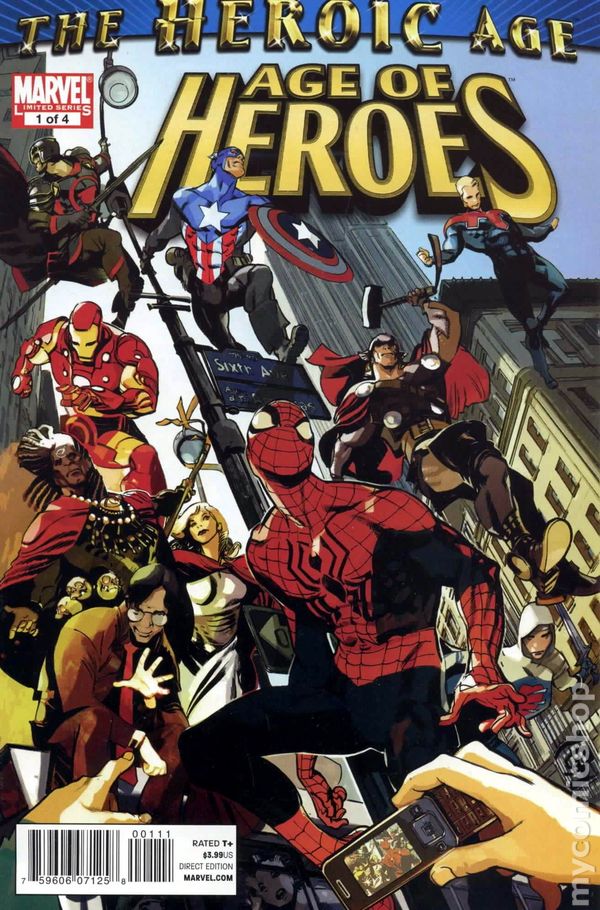



The first few paragraphs of this post were really confusing because it’s at least 80% about the Dark Age, not the Heroic Age, and I thought you were calling the Heroic Age the Dark Age. Also confusing because I don’t know things about comics. But it was enjoyable to read about a comic storyline with strong continuity and stakes across at least half a decade
The first few paragraphs of this post are mostly a lie